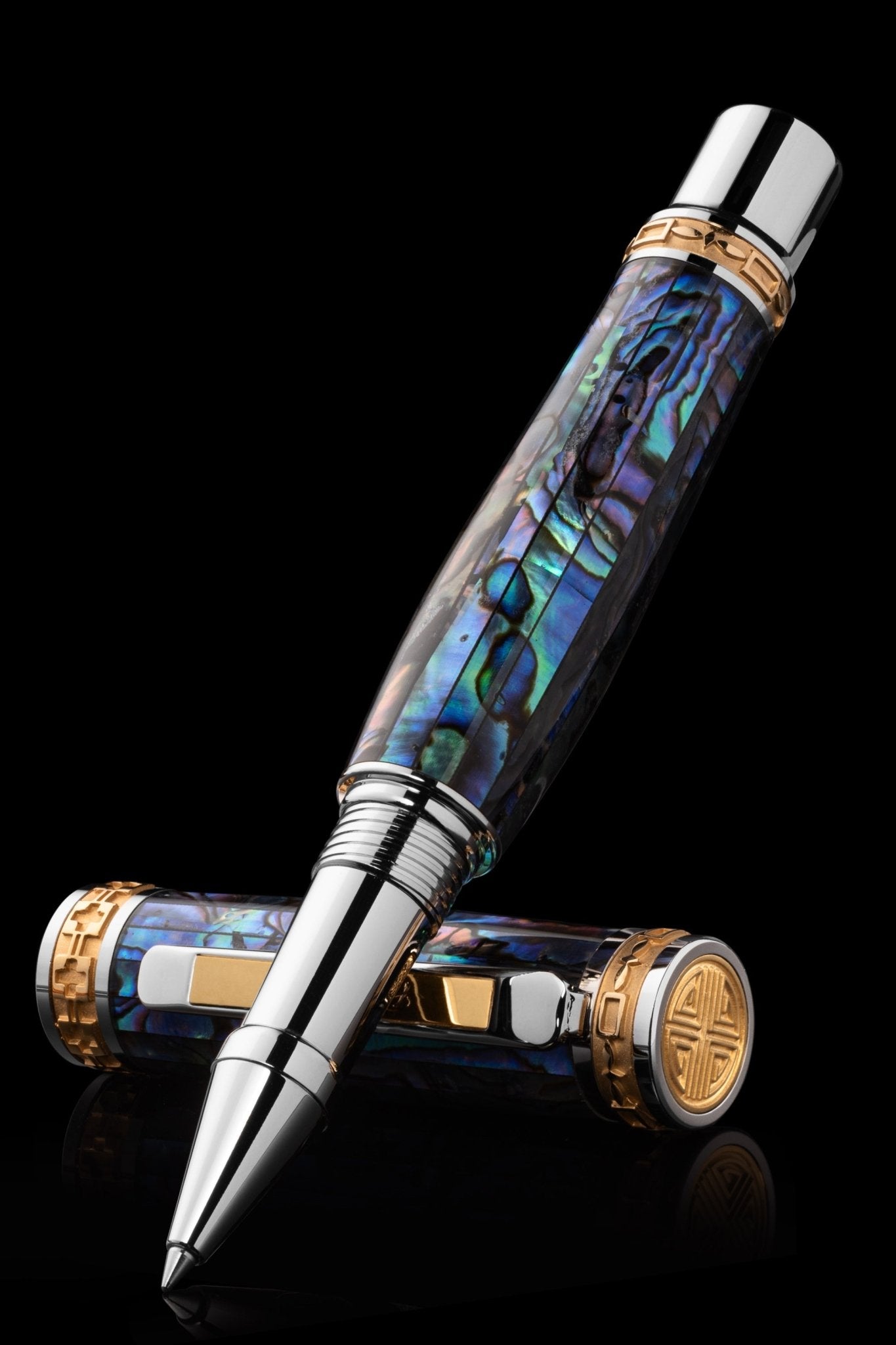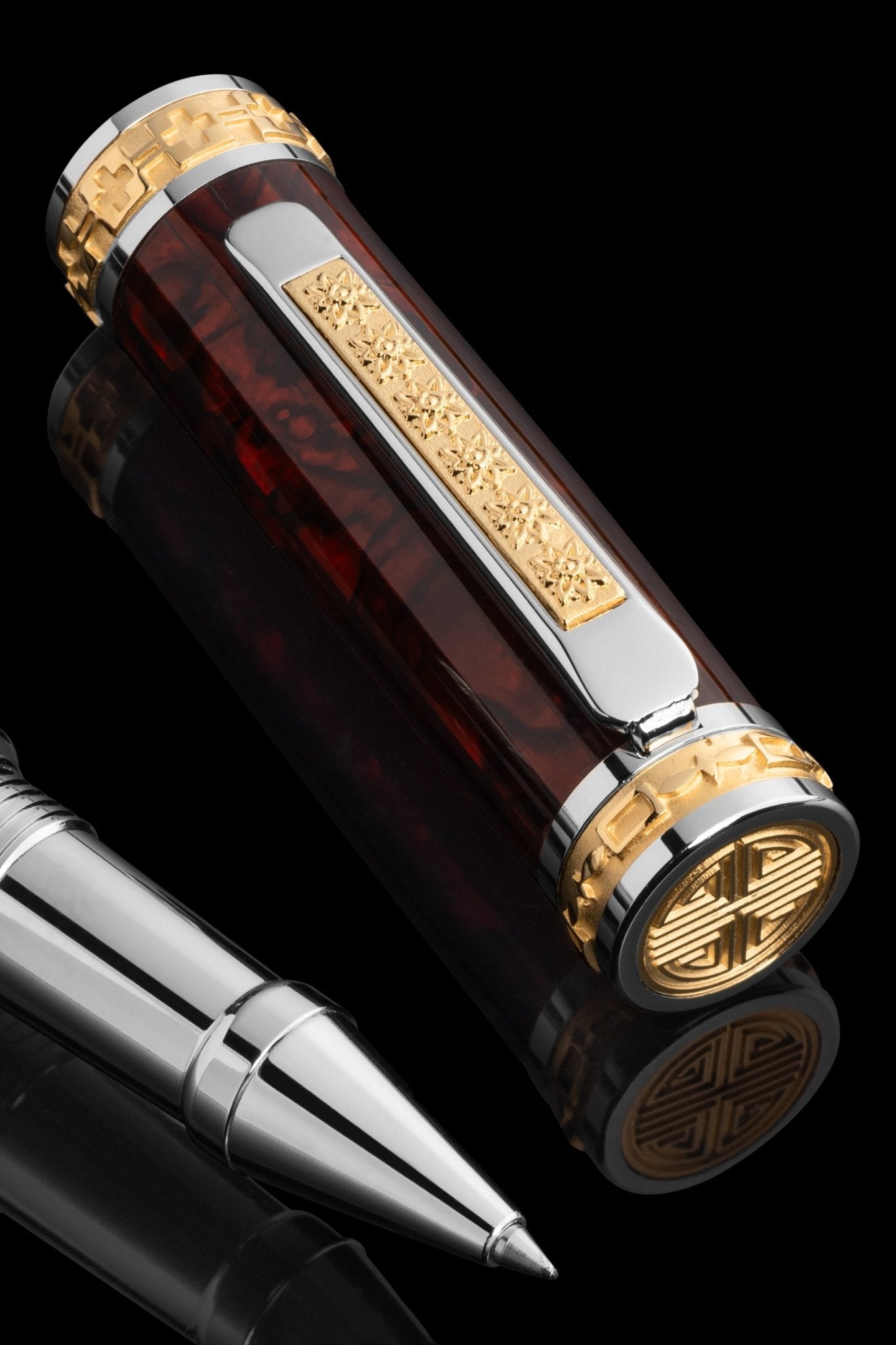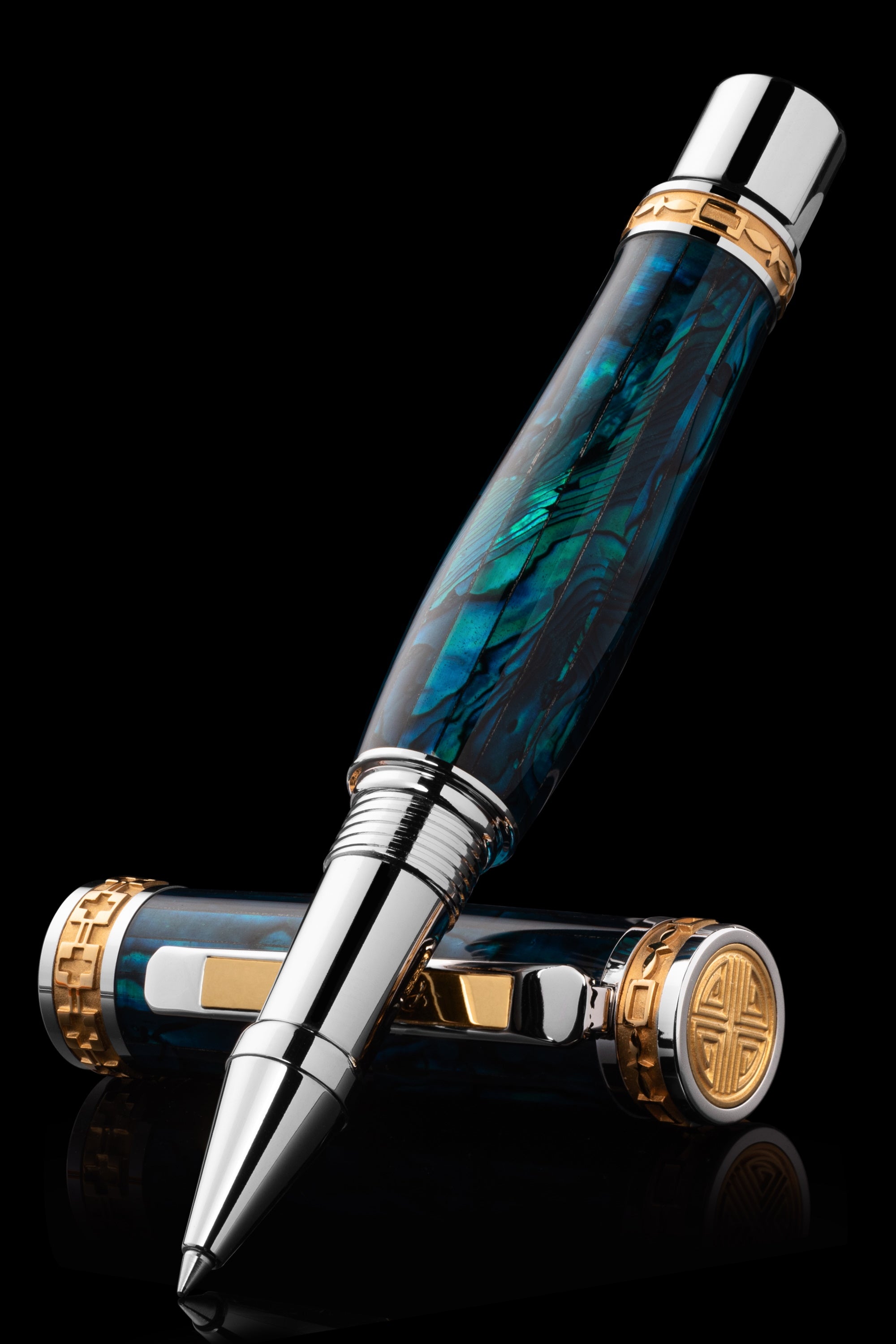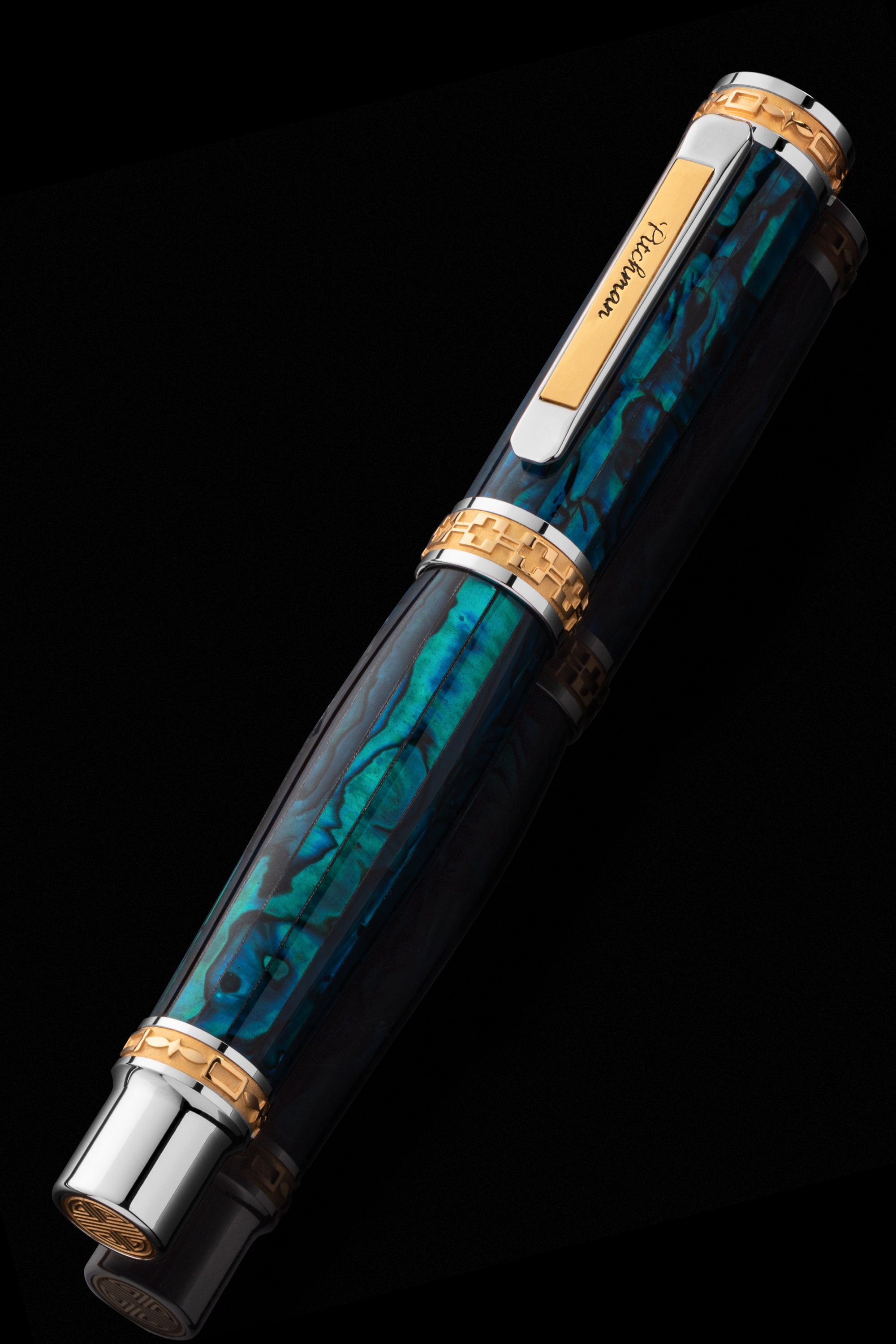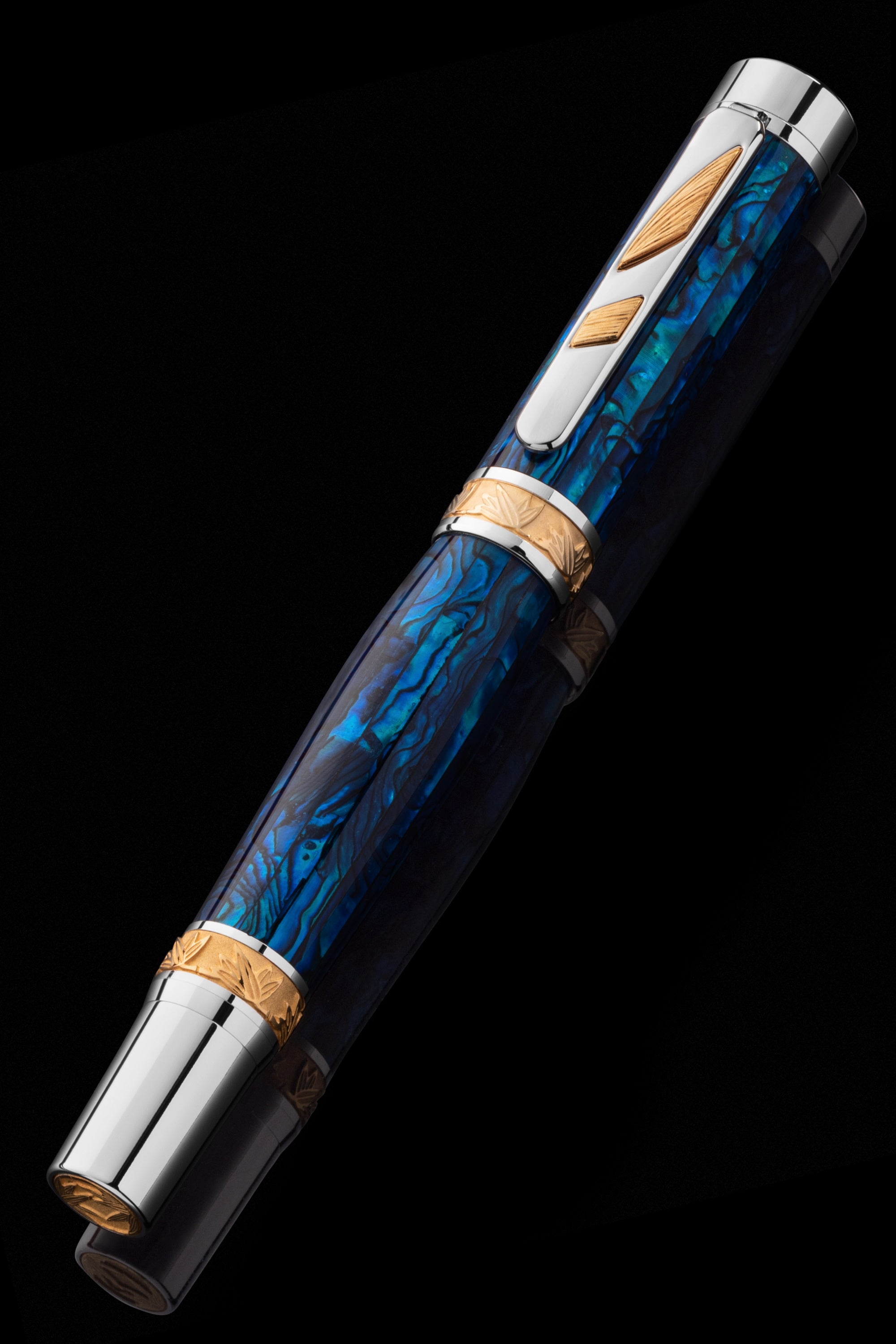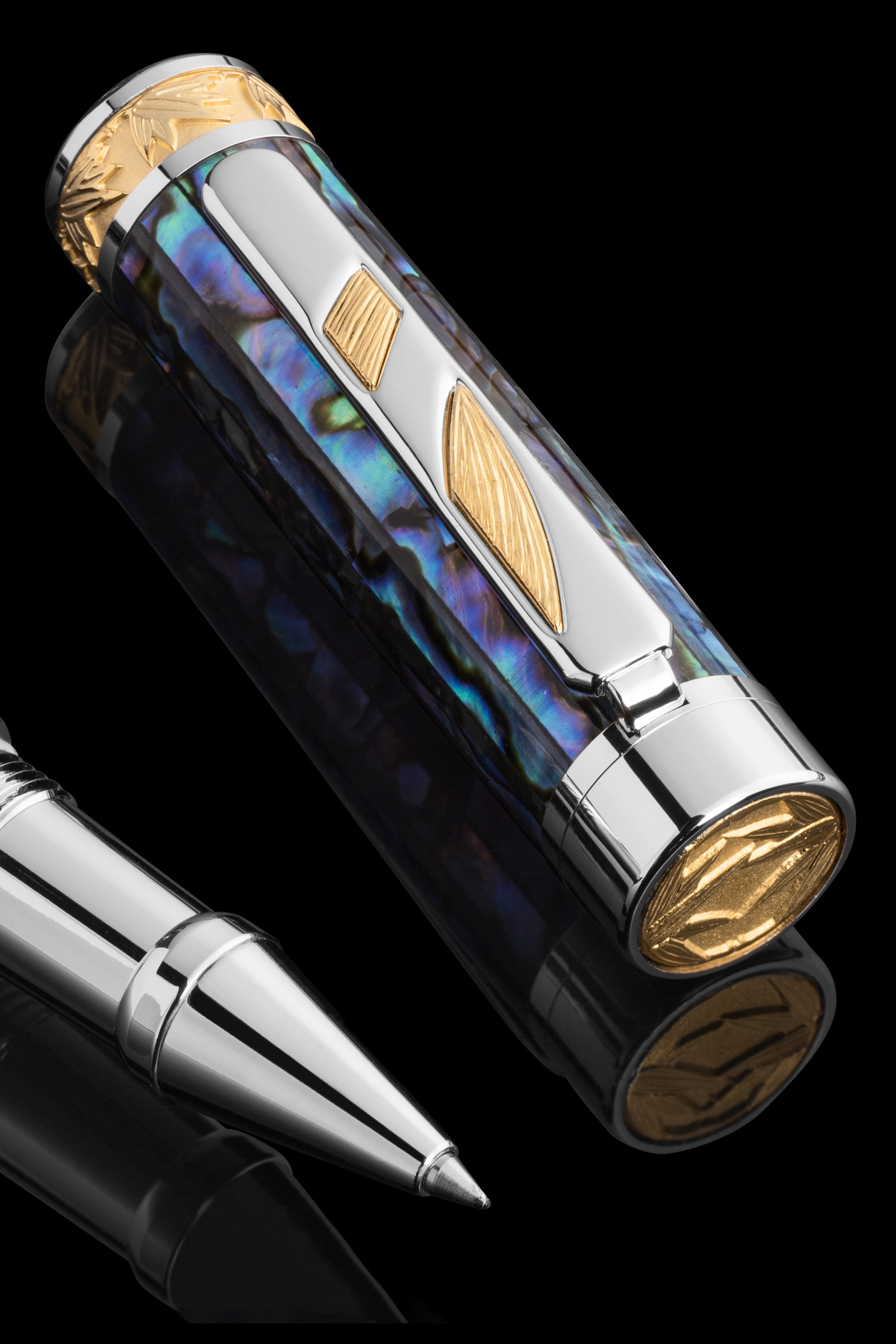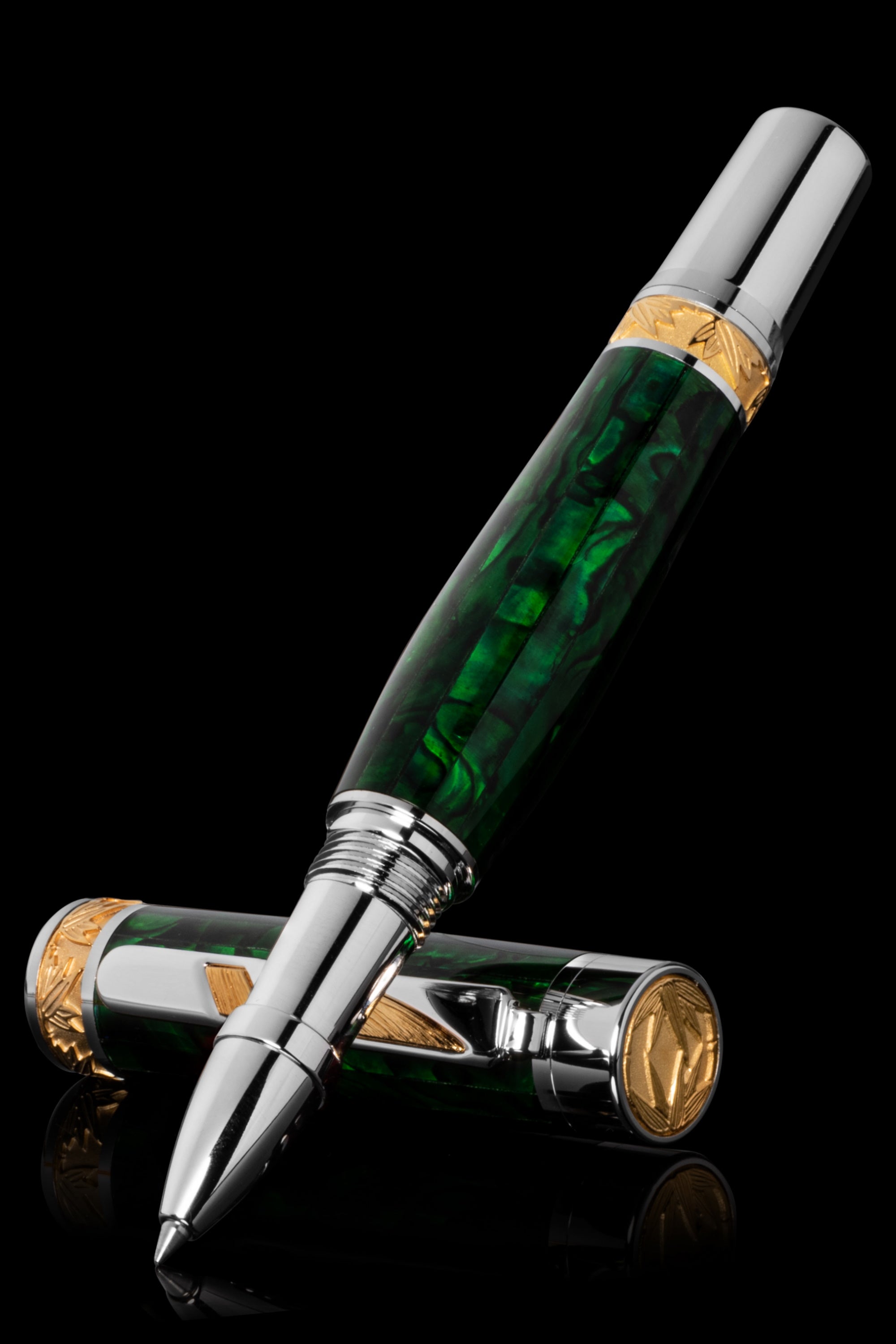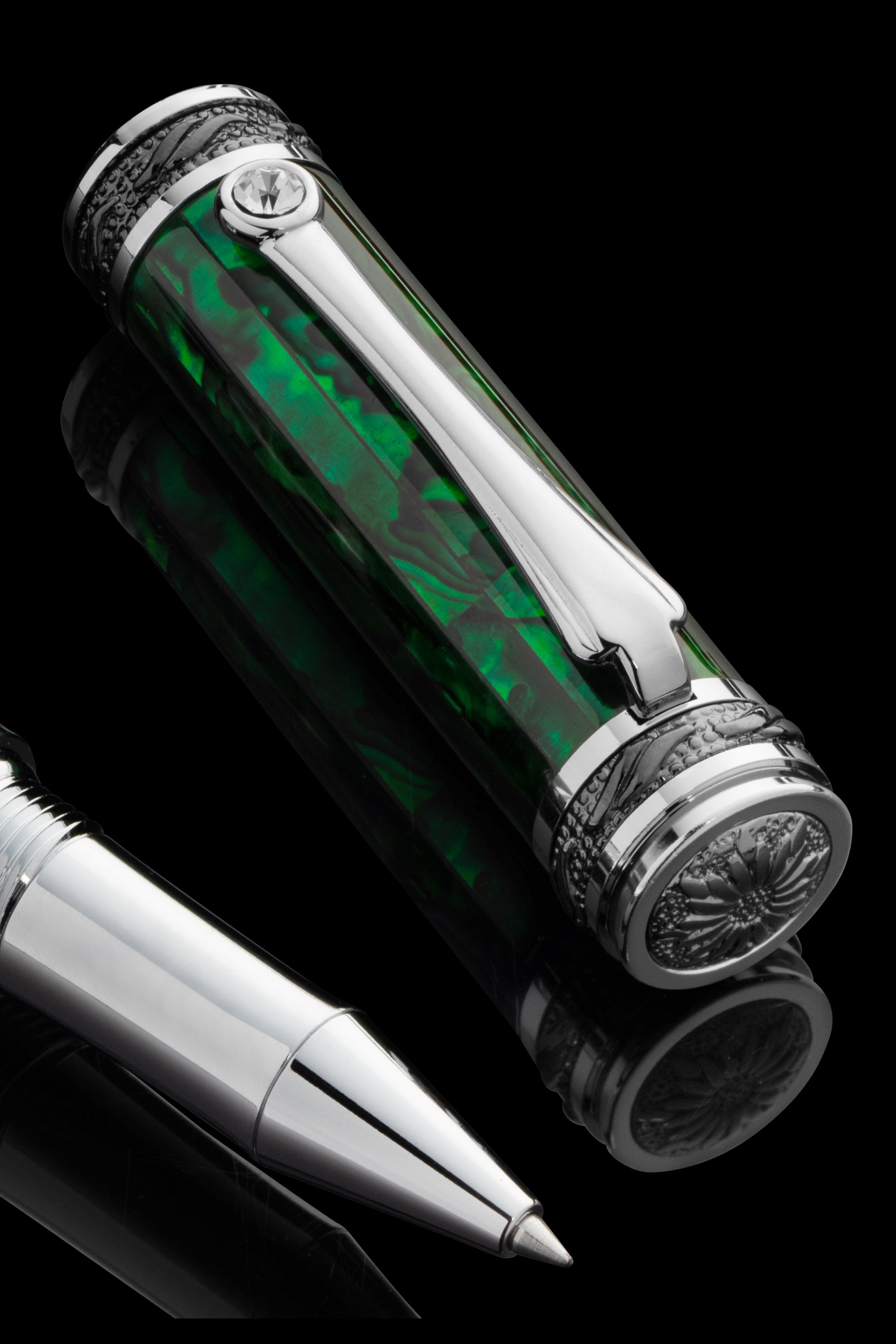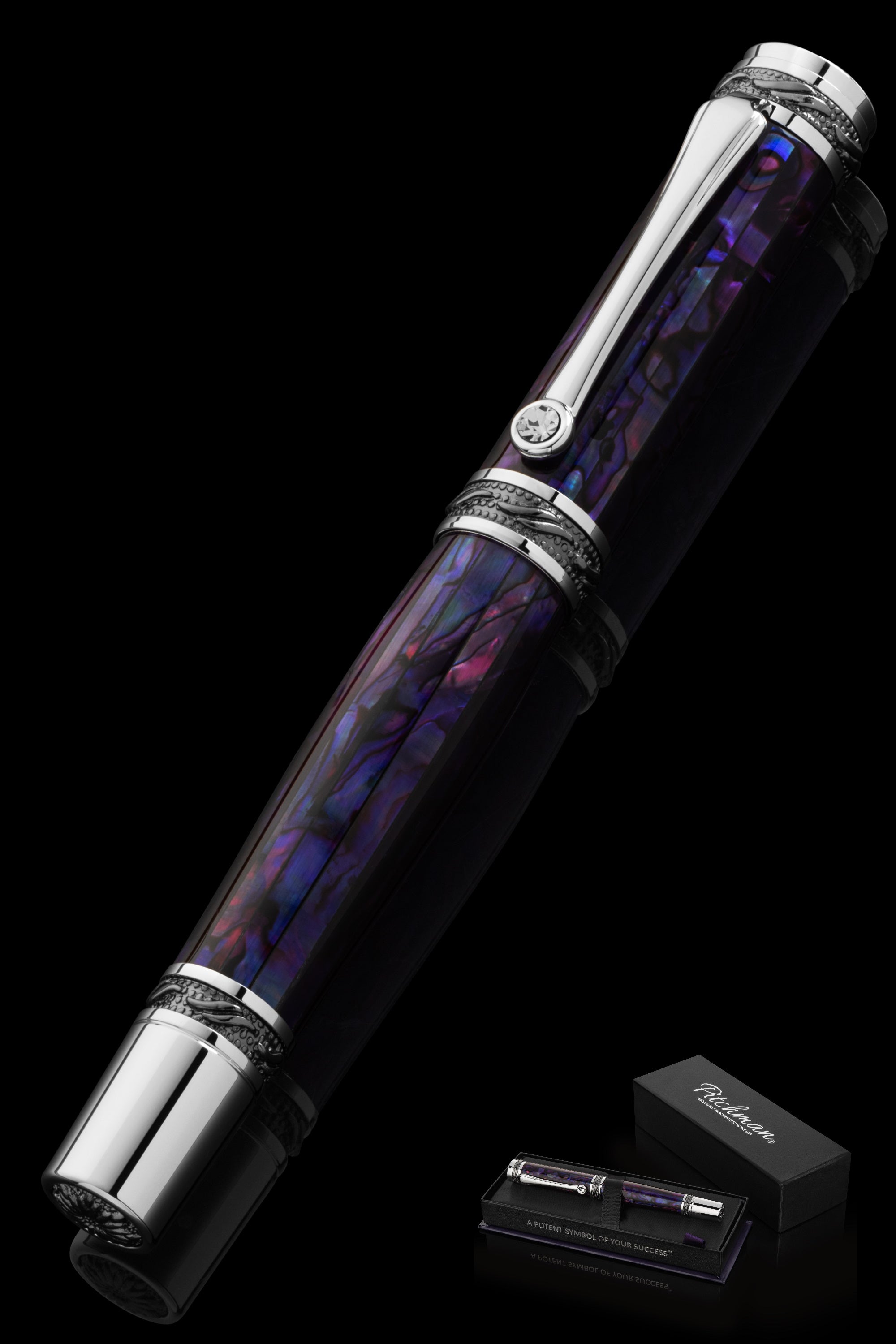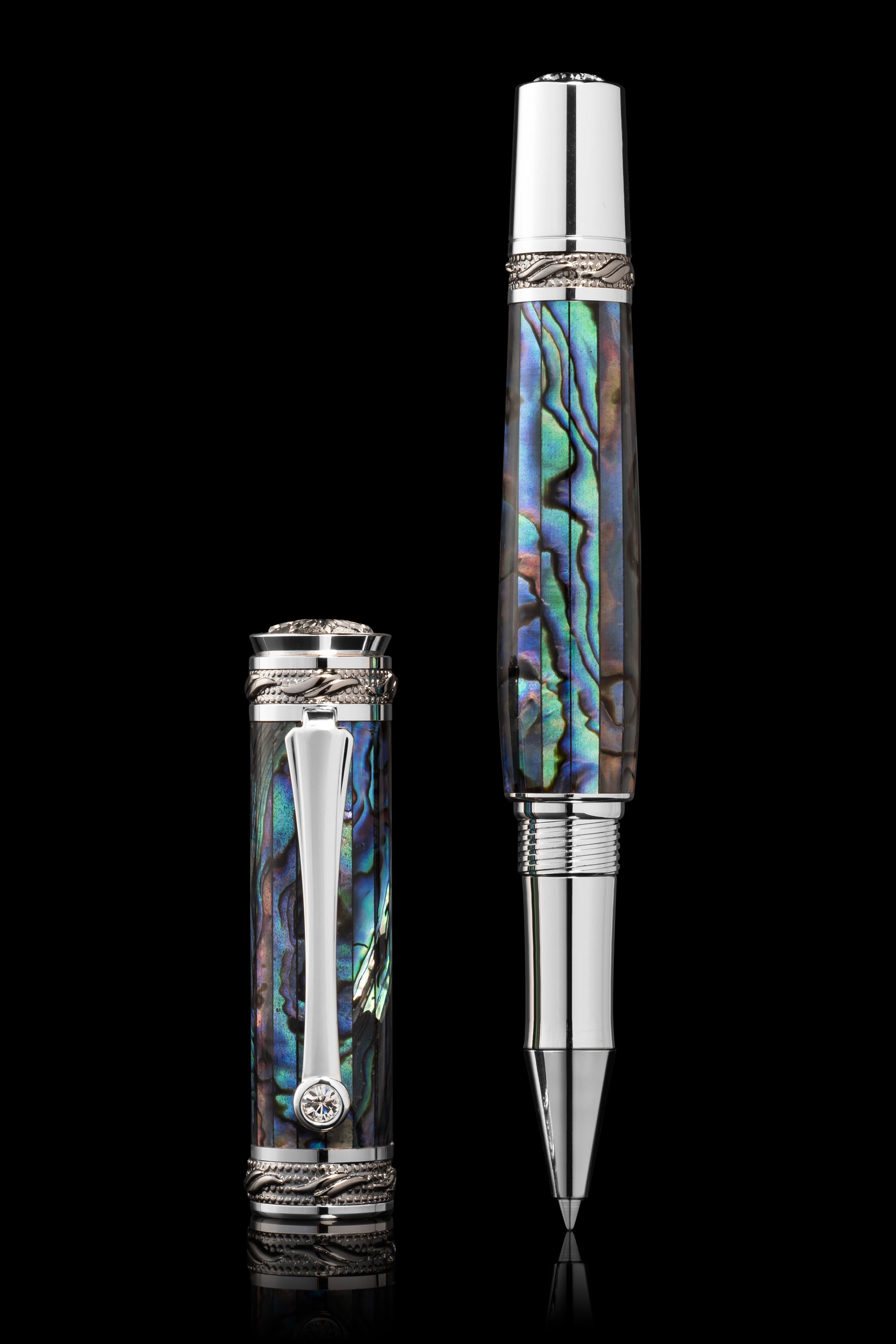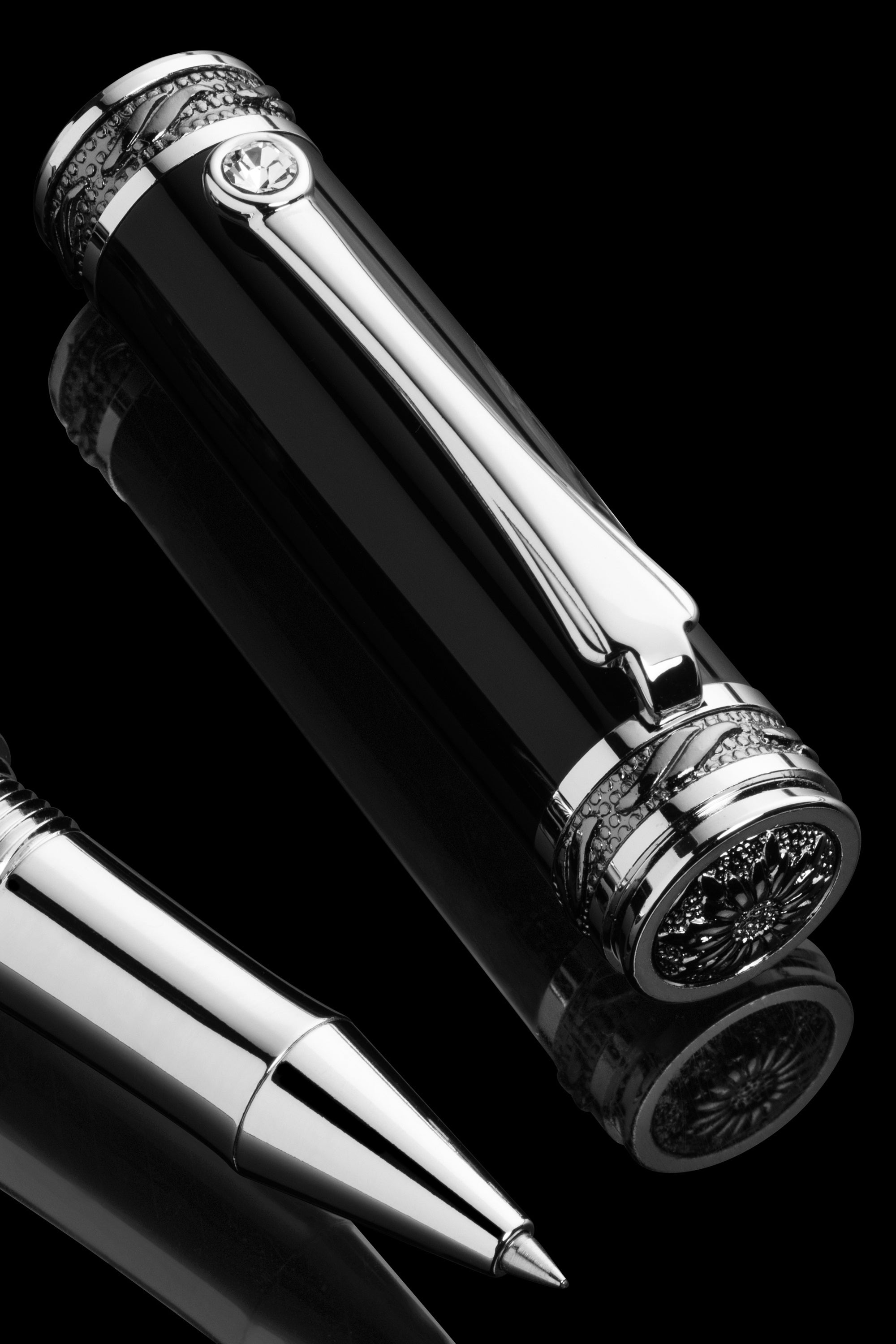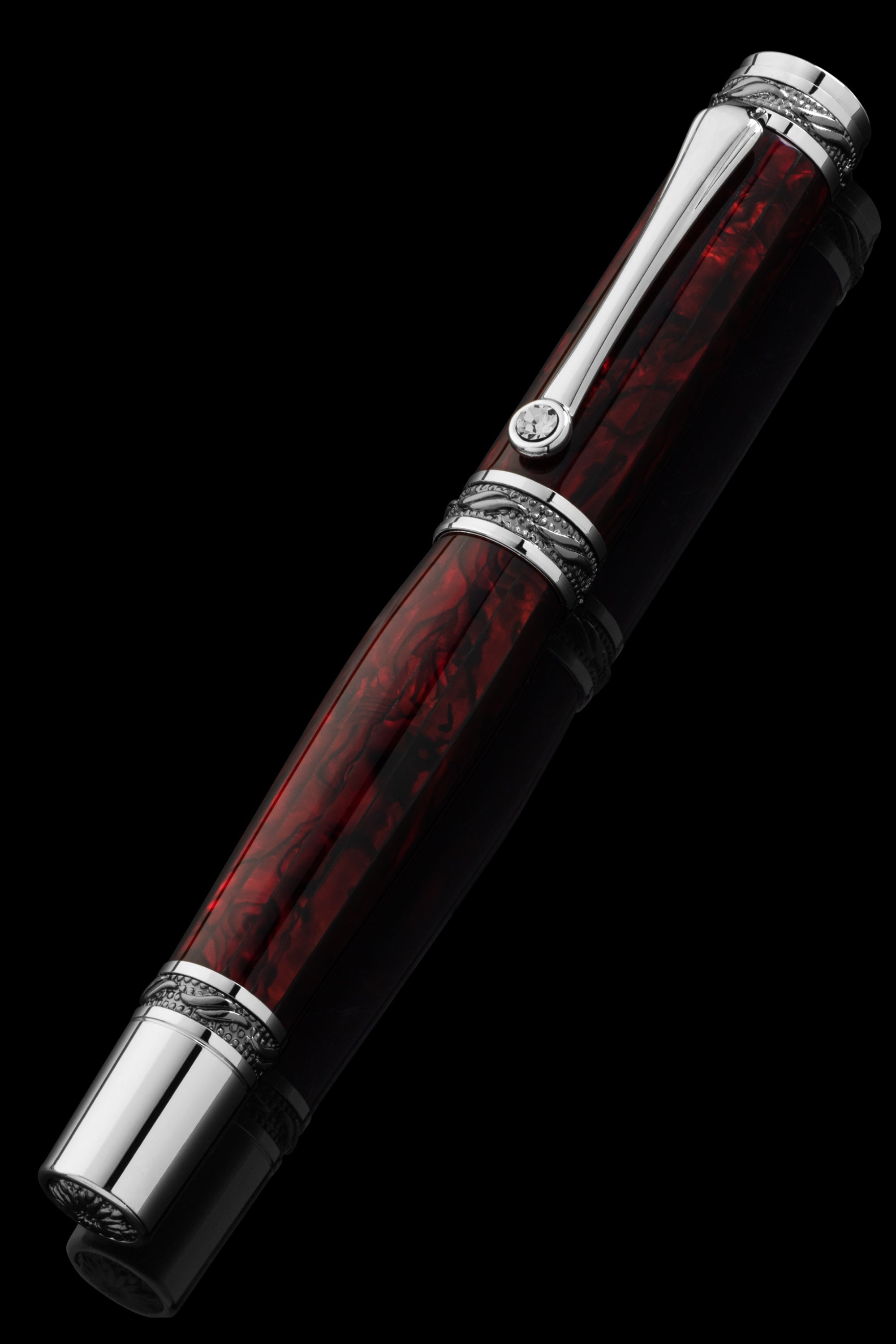Explore All Our Collections
Closer | Rainmaker | Tycoon
Closer
Closer LUXE White Mother of Pearl Rollerball Pen
Closer LUXE Pink Abalone Shell Rollerball Pen
Closer LUXE Sapphire Abalone Shell Rollerball Pen
Closer Blue Abalone Shell Rollerball Pen
Closer Purple Abalone Shell Rollerball Pen
Closer Emerald Abalone Shell Rollerball Pen
Closer Red Abalone Shell Rollerball Pen
Closer Teal Abalone Shell Rollerball Pen
About Pitchman
Pitchman stands as a leader in the handcrafted luxury pen market, meticulously producing 2,000 exquisite writing instruments each year. Our pens are cherished by customers across the globe, representing a hallmark of elegance and craftsmanship.

Rainmaker
Rainmaker White Mother of Pearl Rollerball Pen
Rainmaker Sapphire Abalone Shell Rollerball Pen
Rainmaker Black Rollerball Pen
Rainmaker Blue Abalone Shell Rollerball Pen
Rainmaker Purple Abalone Shell Rollerball Pen
Rainmaker Emerald Abalone Shell Rollerball Pen
See how our writing instruments inspire.
Words of praise from those who know craftsmanship.
"Your pens were a big hit with
our clients, and one of them proudly sits on my desk. Not only is it a luxurious piece, but the writing experience is absolutely incredible :-)I’ve tried pens from various luxury brands like
— Peter StiavnickyBratislava, Slovakia
S.T. Dupont, Montblanc, Waterman, and Montegrappa, but hands down, yours are the best!"
Tycoon
Tycoon Lustrous Tan Abalone Shell Rollerball Pen
Tycoon Lustrous Black Rollerball Pen
Tycoon Lustrous Red Abalone Shell Rollerball Pen

Complimentary Premium Gift Wrapping
Great gifts must deliver a complete experience from moment one. That's why we deliver your new Pitchman in our exclusive signature gift wrapping and embossed with the Pitchman logo in real sealing wax.
Best Pens For Writing
The Art of Writing: What Makes for the Best Pens?
In today's digital age, the allure of pen and paper remains as strong as ever. Whether you're an avid writer, a student taking notes, or simply someone who enjoys jotting down thoughts, the choice of pen can significantly impact your writing experience. In this article, we'll explore the characteristics that make for the best pens for writing, with a particular focus on the often overlooked but precious attribute of pen size.
The Importance of Pen Size
When it comes to pens, size matters. The size of a pen can significantly influence your comfort and writing control. While smaller pens have their place, larger pens offer several advantages:
Enhanced Comfort: Larger pens are more comfortable to hold for extended periods. They reduce strain on your fingers and hand, making them ideal for those long writing sessions.
Improved Control: The increased surface area provides better grip and control. This allows for precise and consistent penmanship, resulting in neater, more legible writing.
Reduced Fatigue: A larger pen distributes the writing pressure evenly across your fingers, reducing hand fatigue. This can be especially beneficial for people who suffer from arthritis or wrist pain.
Easier for Arthritis Sufferers: Individuals with arthritis or other hand-related conditions often find larger pens easier to use due to the reduced effort required to hold them.
Style and Presence: Large pens often have a distinctive, elegant appearance, making them a statement piece for those who appreciate aesthetics in their writing tools.
Other Key Characteristics of the Best Writing Pens
While pen size is a noteworthy factor, several other essential characteristics contribute to the overall quality of a writing pen:
Smooth Ink Flow:
One of the fundamental qualities of a great writing pen is its ability to deliver a consistent and smooth ink flow. This means that as you write, the pen should effortlessly glide across the paper without interruptions, skips, or blotches. Smooth ink flow ensures a pleasant writing experience and results in clean and legible script.
Ink Quality:
The quality of ink used in a pen is of paramount importance. High-quality ink should offer rich, vibrant colors that stand out on the page. It should resist fading and smudging, ensuring that your written words endure over time. Additionally, quick-drying ink is essential, especially for left-handed writers, as it prevents unsightly smudges and keeps your writing crisp and clean. Pay particular attention to the ink cartridge brand, as this plays the most crucial role - go for a top brand such as Schmidt.
Ergonomic Design:
An often underestimated aspect of pen design is its ergonomic qualities. A well-designed pen should feel comfortable in your hand, promoting a relaxed and natural writing posture. This ergonomic consideration extends to factors like grip texture, weight distribution, and the shape of the pen barrel. Pens designed with ergonomics in mind can minimize hand fatigue and allow for longer and more enjoyable writing sessions.
Durability:
A reliable writing pen should be built to last. Look for pens crafted from durable materials such as rare metals like rhodium and titanium that resist scratching and dents and high-quality plastics. A pen that can withstand everyday wear and tear, accidental drops, and the test of time will prove to be a worthwhile investment.
Refillability:
In an era where sustainability is a growing concern, refillable pens have gained popularity. These pens allow you to replace the ink cartridge once it's depleted, reducing waste and the need to buy new pens constantly. Choosing a refillable pen is environmentally responsible and can save you money in the long run.
Point Size Options:
Different writing tasks require different point sizes. Fine points are excellent for precise, detailed writing, while broader points provide bolder lines suitable for headings and highlighting. Having a range of point size options in your pen collection ensures that you can easily adapt to various writing needs.
Pen Type:
The type of pen, whether a ballpoint, rollerball, gel, or fountain pen, dramatically influences your writing experience. Ballpoints and rollerballs are known for reliability and longevity, while gel pens offer smooth, vivid colors. Fountain pens, on the other hand, exude elegance and offer a unique writing experience. Consider your preferences and the specific tasks you have in mind when choosing the pen type that suits you best.
Choosing the best pen for writing is a personal journey that depends on your individual preferences and needs. While larger pens offer distinct advantages in terms of comfort and control, it's crucial to consider other factors like ink quality, durability, and design. Ultimately, the perfect pen for you is the one that feels like an extension of your hand, allowing your thoughts to flow effortlessly onto the page. So, whether you prefer the elegance of a classic fountain pen or the practicality of a well-designed rollerball, the world of writing instruments offers diverse options to enhance your writing experience.
Book an appointment now, and our staff will contact you to arrange your consultation session. If you are new to luxury pens, we can help you identify the perfect pen to suit any occasion or person type. Confused between a rollerball and a fountain pen, we got you there too. We are here to help, so don't hesitate to contact us today for your no-pressure, free consultation.













